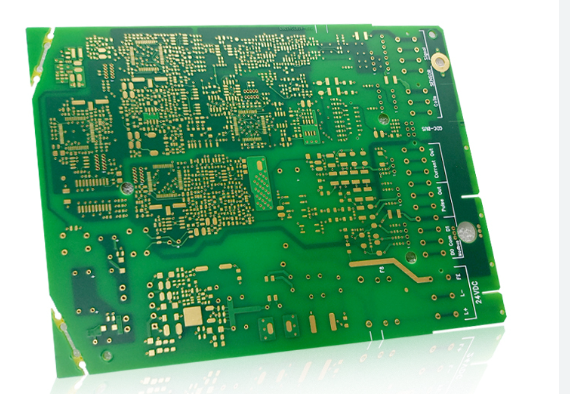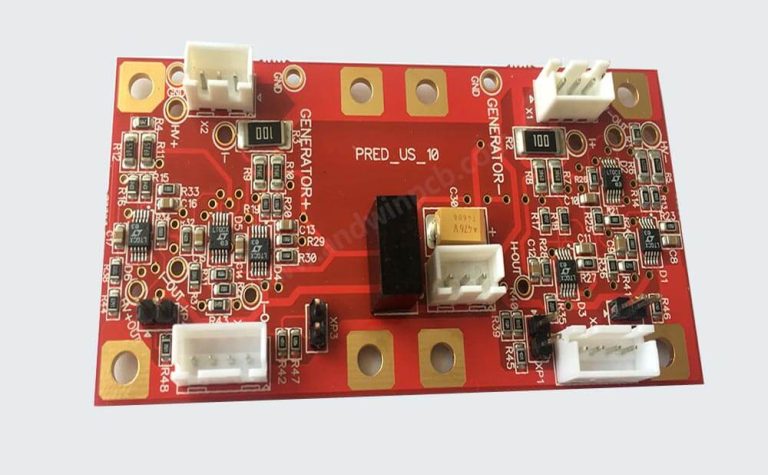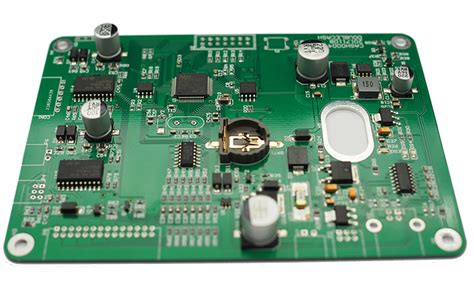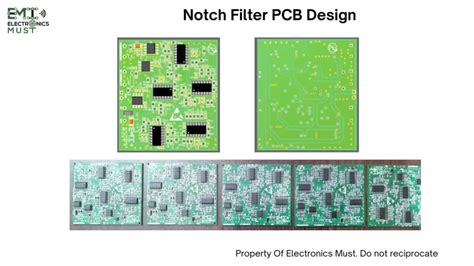Circuit design tools that engineers cannot do without
EDA technology is a computer software system developed on the basis of electronic CAD technology. It refers to the automatic design of electronic products by using computers as working platforms and integrating the latest achievements of applied electronic technology, computer technology, information processing and intelligent technology. With EDA tools, the entire process of electronic products from circuit design, performance analysis to IC layout or PCB layout design can be automatically processed on the computer.
Common EDA software
EDA tools emerge in an endless stream. At present, the EDA software that has entered my country and has a wide influence include: EWB, PSPICE, OrCAD, PCAD, Protel, ViewLogic, Mentor, Graphics, Synopsys, LSIlogic, Cadence, MicroSim, etc. According to the main function or main application occasion, it can be divided into circuit design and simulation tools, PCB design software, IC design software, PLD design tools and other EDA software.
Electronic circuit design and simulation tools
Electronic circuit design and simulation tools include SPICE/PSPICE; EWB; Matlab; SystemView; MMICAD, etc. The following is a brief introduction to the first three software.
(1) SPICE:
Circuit analysis and simulation software launched by the University of California, USA. PSPICE6.2 is currently the most widely used software. It is the most powerful analog and digital circuit mixed simulation EDA software among similar products. It can perform various circuit simulations, stimulus establishment, temperature and noise analysis, analog control, waveform output, data output, and display analog and digital simulation results in the same window. No matter which device or circuit is simulated, accurate simulation results can be obtained, and components and component libraries can be established by yourself.
(2) EWB software:
Circuit simulation software launched in the early 1990s. Compared with other EDA software, it is a relatively small software (only 16M). However, its mixed simulation function for analog and digital circuits is very powerful, and it can simulate the results of real circuits almost 100%. In addition, it provides multimeters, oscilloscopes, signal generators, sweep frequency analyzers, logic analyzers, digital signal generators, logic converters, voltmeters, ammeters and other instruments on the desktop. Its interface is intuitive and easy to learn and use. Many of its functions imitate the design of SPICE, but its analysis functions are slightly less than PSPICE.
(3) Text MATLAB product family
One of their major features is that they have many toolboxes and simulation blocks for specific applications, including a complete set of functions for analyzing and designing special applications such as image signal processing, control system design, neural networks, etc. It has functions such as data acquisition, report generation, and MATLAB language programming to generate independent C/C++ code.
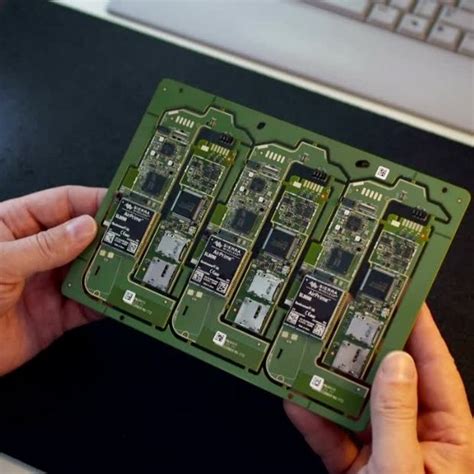
PCB design software
There are many types of PCB (Printed—Circuit Board) design software, such as Protel; OrCAD; Viewlogic; PowerPCB; Cadence PSD; MentorGraphices’ Expedition PCB; Zuken CadStart; Winboard/Windraft/Ivex-SPICE; PCB Studio; TANGO, etc. Among them, Protel is a complete and all-round circuit design system, which includes electrical schematic drawing, analog circuit and digital circuit mixed signal simulation, multi-layer printed circuit board design (including automatic layout and routing of printed circuit boards), programmable logic device design, chart generation, circuit table generation, support for macro operations and other functions, and has Client/Server (client/server architecture, and is also compatible with the file formats of some other design software, such as ORCAD, PSPICE, EXCEL, etc.
IC design software
There are many IC design tools, among which Cadence, Mentor Graphics and Synopsys are ranked in terms of market share.
(1) Design input tools:
such as Cadence’s composer, viewlogic’s viewdraw, hardware description languages VHDL and Verilog HDL are the main design languages, and many design input tools support HDL. In addition, Active-HDL and other design input methods, including principle and state machine input methods, are mostly used as input methods for IC design tools, such as the development tools provided by Xilinx, Altera and other companies, Modelsim FPGA, etc.
(2) Design simulation:
One of the biggest advantages of EDA tools is that they can verify whether the design is correct. Almost every company’s EDA products have simulation tools. Verilog-XL and NC-verilog are used for Verilog simulation, Leapfrog is used for VHDL simulation, and Analog Artist is used for analog circuit simulation. Viewlogic’s simulators include: viewsim gate-level circuit simulator, speedwave VHDL simulator, and VCS-verilog simulator. Mentor Graphics has a VHDL and Verilog dual simulator produced by its subsidiary Model Tech: Model Sim. Cadence and Synopsys use VSS (VHDL simulator). The current trend is that major EDA companies are gradually using HDL simulators as circuit verification tools.
(3) Synthesis tools
Synthesis tools can turn HDL into gate-level netlists. In this regard, Synopsys tools have a greater advantage. Its Design Compile is the industrial standard for synthesis, and it also has another product called Behavior Compiler can provide more advanced synthesis. In addition, the United States has recently released a software called Ambit, which is said to be more effective than Synopsys’s software. It can synthesize circuits with 500,000 gates and is faster. At the beginning of this year, Ambit was acquired by Cadence, and Cadence abandoned its original synthesis software Synergy. As the scale of FPGA design becomes larger and larger, various EDA companies have developed synthesis software for FPGA design. The more famous ones are: Synopsys’s FPGA Express, Cadence’s Synplity, and Mentor’s Leonardo. The FPGA synthesis software of these three companies occupies the vast majority of the market.
(4) Layout and routing
Among the layout and routing tools for IC design, Cadence software is relatively strong. It has many products for standard cells and gate arrays, and can realize interactive routing. The most famous one is Cadence Spectra, which was originally used for PCB routing. Later, Cadence used it for IC routing. Its main tools are: Cell3, Silicon Ensemble—standard cell router; Gate Ensemble—gate array router; Design Planner—layout tool. Other EDA software development companies also provide their own layout and routing tools.
(5) Physical verification tools
Physical verification tools include layout design tools, layout verification tools, layout extraction tools, etc. Cadence is also very strong in this area, and its physical tools such as Dracula, Virtuso, and Vampire have many users.
(6) Analog circuit simulators
The simulators mentioned above are mainly for digital circuits. For simulation tools for analog circuits, SPICE is widely used, which is the only choice. It’s just that different companies’ SPICEs are selected, such as PSPICE from MiceoSim, HSPICE from Meta Soft, etc. HSPICE has now been acquired by Avanti. Among the many SPICEs, HSPICE is the best and most accurate. As an IC design, it has the most models and the highest simulation accuracy.
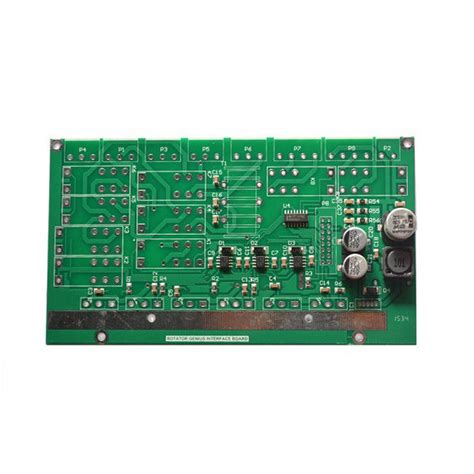
PLD design tools
PLD (Programmable Logic Device) is a digital integrated circuit that is constructed by users according to their own needs. There are currently two main types: CPLD (Complex PLD) and FPGA (Field Programmable Gate Array). Their basic design method is to use EDA software to generate the corresponding target file using schematics, state machines, Boolean expressions, hardware description languages, etc., and finally use a programmer or download cable to implement it by the target device. There are many manufacturers that produce PLDs, but the most representative PLD manufacturers are ALTERA, Xilinx and Lattice.
PLD development tools are generally provided by device manufacturers, but as the scale of devices continues to increase, the complexity of software also increases. Currently, specialized software companies cooperate with device manufacturers to launch powerful design software.
PLD (Programmable Logic Device) is a new type of circuit that can completely replace the 74 series, GAL, and PLA. As long as you have a digital circuit foundation and can use a computer, you can develop PLD. PLD’s online programming capabilities and powerful development software enable engineers to complete work that used to take weeks to complete in a few days or even minutes, and can integrate complex designs of millions of gates into a chip. PLD technology has become a must-have technology for electronic engineers in developed countries.
PLD production and development tools:
(1) ALTERA has developed rapidly since the 1990s.
Its main products include: MAX3000/7000, FELX6K/10K, APEX20K, ACEX1K, Stratix, etc. Its development tool – MAX+PLUS II is a relatively successful PLD development platform, and the latest is the Quartus II development software. Altera provides a variety of design input methods and binds third-party VHDL synthesis tools, such as: synthesis software FPGA Express, Leonard Spectrum, simulation software ModelSim.
(2) ILINX The inventor of FPGA.
The product range is relatively complete, mainly including; XC9500/4000, Coolrunner (XPLA3), Spartan, Vertex and other series. Its largest Vertex-II Pro device has reached 8 million gates. The development software is Foundation and ISE. Generally speaking, more people use Xilinx in Europe, more people use ALTERA in *** and the Asia-Pacific region, and the two are evenly matched in the United States. More than 60% of the global PLD/FPGA products are provided by Altera and Xilinx. It can be said that Altera and Xilinx jointly determine the development direction of PLD technology.
(3) Lattice-Vantis Lattice is the inventor of ISP (In-System Programmability) technology.
ISP technology has greatly promoted the development of PLD products. Compared with ALTERA and XILINX, its development tools are slightly inferior to those of Altera and Xilinx. Small and medium-sized PLDs are more distinctive, and the competitiveness of large-scale PLDs is not strong enough (Lattice does not have large-scale FPGAs based on lookup table technology). In 1999, it launched programmable analog devices and acquired Vantis (formerly a subsidiary of AMD) in 1999, becoming the third largest supplier of programmable logic devices. In December 2001, it acquired the FPGA department of Agere (formerly Lucent Microelectronics Department). The main products are ispLSI2000/5000/8000 and MACH4/5.
(4) ACTEL is the leader in anti-fuse (one-time programming) PLD.
Since anti-fuse PLD is radiation-resistant, high and low temperature resistant, low power consumption and fast, it has great advantages in military and aerospace markets. ALTERA and XILINX generally do not get involved in the military and aerospace markets.
(5) Quicklogic is a professional PLD/FPGA company, mainly using one-time anti-fuse technology, and its sales volume in China is not large.
(6) Lucent’s main feature is that it has many dedicated IP cores for the communication field, but PLD/FPGA is not Lucent’s main business, and few people use it in China.
(7) ATMEL is good at small and medium-sized PLD. ATMEL has also made some chips compatible with Altera and Xilinx, but there is still some gap in quality with the original manufacturers. It is rarely used in high-reliability products and is mostly used in low-end products.
(8) Clear Logic produces chips compatible with some well-known PLD/FPGA companies. This chip can solidify the user’s design once and for all, is not programmable, and has a low cost in mass production.
(9)WSI produces PSD (Programmable Peripheral Chip) products. This is a special PLD. For example, the latest PSD8xx and PSD9xx integrate PLD, EPROM, Flash, and support ISP (Online Programming). They are highly integrated and are mainly used to work with single-chip microcomputers.

Other EDA software
(1)VHSIC Hardware Description Language (VHDL) is a standard design language of IEEE. It originated from the Very High Speed Integrated Circuit (VHSIC) program proposed by the US Department of Defense and is a major input tool for ASIC design and PLD design.
(2)Veriolg HDL is a hardware description language launched by Verilog, which is on par with VHDL in ASIC design.
(3)Other EDA software, such as tools specifically used in microwave circuit design and power carrier tools, PCB production and process control, will not be introduced here.
Introduction to saber software, which is mainly used for switching power supply simulation.
Saber is a mixed-signal, mixed-technology design and verification tool that is widely used in power electronics, mixed-analog simulation, automotive electronics, and mechatronics.


